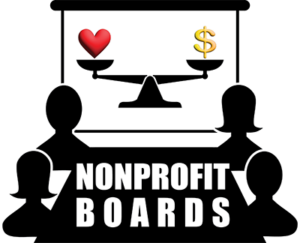
To conclude challenges that governing board members of nonprofit organizations face, let’s consider religious organizations and governments. Although few seem willing to address them, I’ll do so. Why? Governing boards for religious organizations and governments face the same challenges governing boards for nonprofit organizations, higher education institutions, and corporations face.
How can I be so sure when I haven’t served on governing boards for all religious organizations and local, county, state, national, and international government bodies? It’s simple, governing boards consist of people and people’s shortcomings are pretty much the same no matter where they “sit” on a governing board.
Consider challenges in previous blogs: qualifications, conflicts of interest, undue influence, egos, preparation, accountability, confidentiality, board size, diversity, consequences, tone at the top, truth, selecting the board chair, succession planning, removing and/or replacing a board member, measuring the board’s effectiveness, communications within the board and with the CEO, coping with change and conflicts, knowing and respecting boundaries, remaining independent, fiduciary, tough questions and issues, laws, new board members, documenting board discussions and actions, commitment, and holding people accountable. Don’t they apply to governments and religious organizations?
The structure of the governing board varies significantly among religious and government bodies. So do the ways in which people are chosen or elected to serve on the governing boards. While one might believe governing boards for religious organizations aren’t political, sadly that isn’t the case. Politics raises its head in every organization, as do the challenges. As Walmart’s Mike Duke pointed out to students in my leadership class, he was the CEO of an organization with more than two million imperfect people.
In Chapter 4 (“You Are What You Read”) of The Contrarian’s Guide to Leadership, Steven B. Sample provides a compelling argument for leaders to read what he calls supertexts, those written at least 400 years ago and still widely read. He notes that they have influenced every part of today’s culture. When asked which he believes are most valuable to modern leaders, he cites Machiavelli’s The Prince, the Bible, Plato’s Republic, Shakespeare’s Hamlet, Sophocles’ Antigone, and Dante’s Divine Comedy. Sample goes on to say, “A leader’s choices of vocabulary, metaphors, syntax, phraseology and patterns of speech are all affected to a greater or lesser extent by the supertexts, because the leader knows (or unconsciously senses) that the language of these texts (updated with a bit of current jargon) has a high probability of resonating with the followers.”[1]
Sample isn’t alone in believing supertexts are valuable for contemporary leaders. Peter F. Drucker, in The Practice of Management, identifies the Bible and the writings of Aeschylus as ancient sources of valuable information on leadership. He observes, “The first systematic book on leadership: the Kyropaidaia of Xenophon—himself no mean leader of men—is still the best book on the subject.”[2]
In previous blogs I shared leadership principles from Sun Tzu’s The Art of War, Xenophon’s Kyropaidaia and Anabasis, Machiavelli’s The Prince, and eight of Shakespeare’s plays: Hamlet, Othello, Julius Caesar, King Henry V, Richard III, King Lear, Much Ado About Nothing, and All’s Well That Ends Well. As stated in Ecclesiastes 1:9, “What has been will be again, what has been done will be done again; there is nothing new under the sun.” Learn how other leaders dealt with problems similar to yours. Don’t reinvent the wheel!
If I’ve failed to consider a challenge faced by governing board members, please let me know. My email address is jawhite@uark.edu.
Next Week: Balancing Academics and Athletics
[1] Sample, Steven B., The Contrarian’s Guide to Leadership, Jossey-Bass, San Fransisco, CA, 2002, pp. 56-58.
[2] Drucker, Peter F., The Practice of Management, Harper & Row, New York, NY, 1954, pp. 58-59.